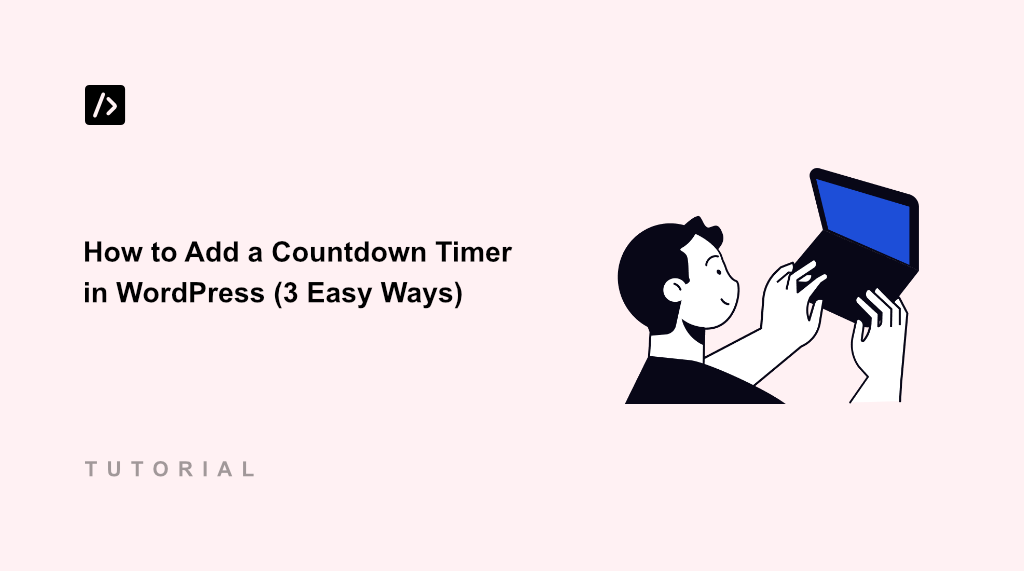I remember launching my first flash sale without a countdown timer. The promotion felt flat, and sales trickled in slowly throughout the week. Visitors had no sense of urgency, so they bookmarked my page with good intentions, but never returned to buy.
That changed everything when I added my first countdown timer. Suddenly, my promotions had life. People could see exactly how much time remained, and sales started pouring in during the final hours instead of being spread out over days.
A countdown timer is simply a visual clock that counts down to a specific date and time. It creates urgency by showing visitors exactly how long they have left to take advantage of your offer or attend your event.
In this article, I’ll show you how to add a countdown timer in WordPress using different ways.
Why Add a Countdown Timer in WordPress?
Your website visitors are busy people with short attention spans. Without a clear reason to act now, they won’t have a reason to come back later.
The harsh reality is that most of them never return. Studies show that creating urgency can increase conversion rates by up to 332%. Instead of casual browsing, visitors would actually complete their purchases during the same session.
Countdown timers work because they tap into our natural fear of missing out (FOMO). When people see time running out, their brains shift from ‘maybe later’ mode into ‘I need to decide now’ mode.
Beyond sales, countdown timers are incredibly useful for building anticipation around product launches, webinar registrations, or limited-time content offers. You can also use them for early bird pricing to exclusive access periods.
The visual element matters too. A ticking countdown timer draws attention and keeps visitors engaged with your page longer than static text ever could.
With that, let’s look at 3 ways to easily add a countdown timer to your WordPress site. If you’re looking to add a simple countdown timer, then WPCode is the best solution.
However, if you want the countdown timer to be part of a custom theme or landing page, then SeedProd is best for you. Lastly, you can also show countdown timers in popups using OptinMonster.
Method 1: Add Countdown Timers Using WPCode
If you’re looking to add a simple countdown timer to any specific page or blog post, then WPCode is the best option.
It is the best WordPress code snippet plugin that makes it very easy to add, manage, and edit custom code snippets on your site. WPCode also offers a snippet library verified by experts, so you can easily introduce new features and functionalities to WordPress in just a few clicks.
The library includes a custom snippet for a countdown timer, which you can quickly insert on your website. Plus, WPCode also offers advanced features like schema generator, AI code generator, tracking code changes, conversion pixel addon, and more.
To get started, you can go to Plugins » Add New Plugin from the WordPress admin panel and search for ‘WPCode’ in the search bar.
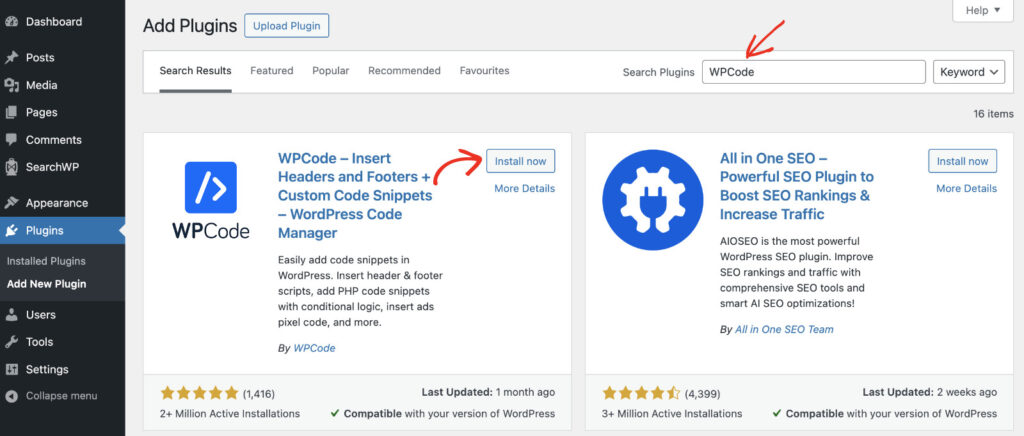
Next, you’ll need to click the ‘Install now’ button and activate the plugin. If you need help, then please follow this guide on how to install a WordPress plugin.
Once the plugin is active and ready to use, you can go ahead and add a custom snippet to enable maintenance mode.
Simply head to the Code Snippets » Add Snippet page from the WordPress dashboard. From here, you can search for the ‘Simple Countdown Timer’ snippet and select the snippet.
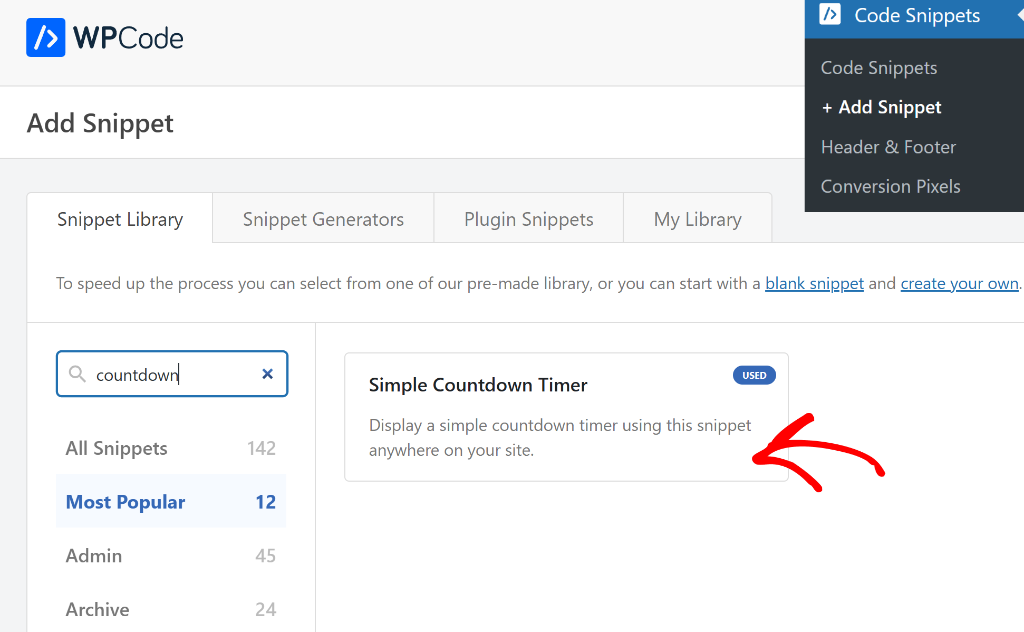
On the next screen, you will see the countdown timer code snippet preloaded in the code editor.
Here, you can edit and make changes to the snippet. For example, the end time for the timer is set to December 31, 2026, at 23:59:59. You can update the end date and time for your timer.
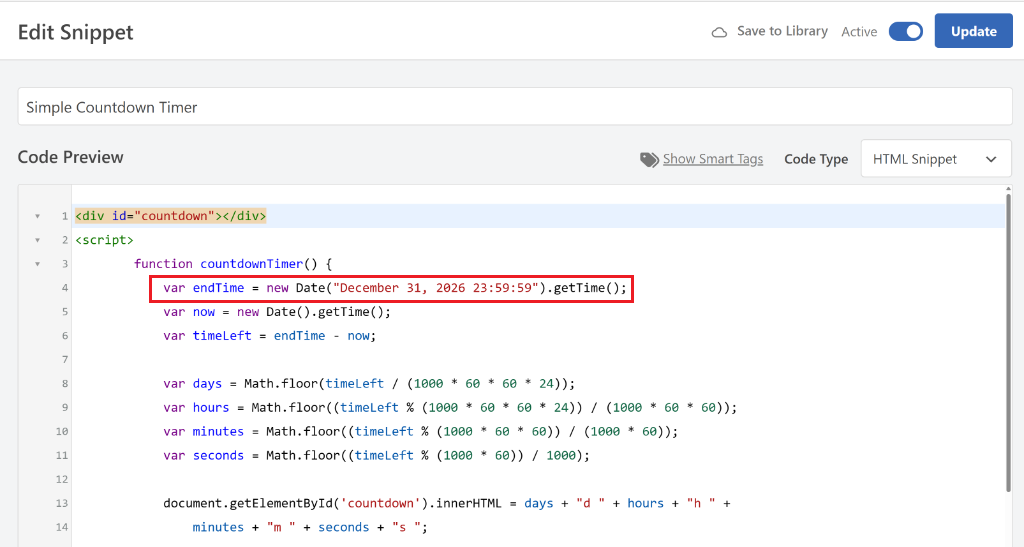
Next, you can scroll down to the Insertion section in WPCode. This is where you can choose how to insert the code on your site and display the countdown timer.
By default, WPCode will select the ‘Shortcode’ method for inserting the snippet. Go ahead and copy the shortcode.
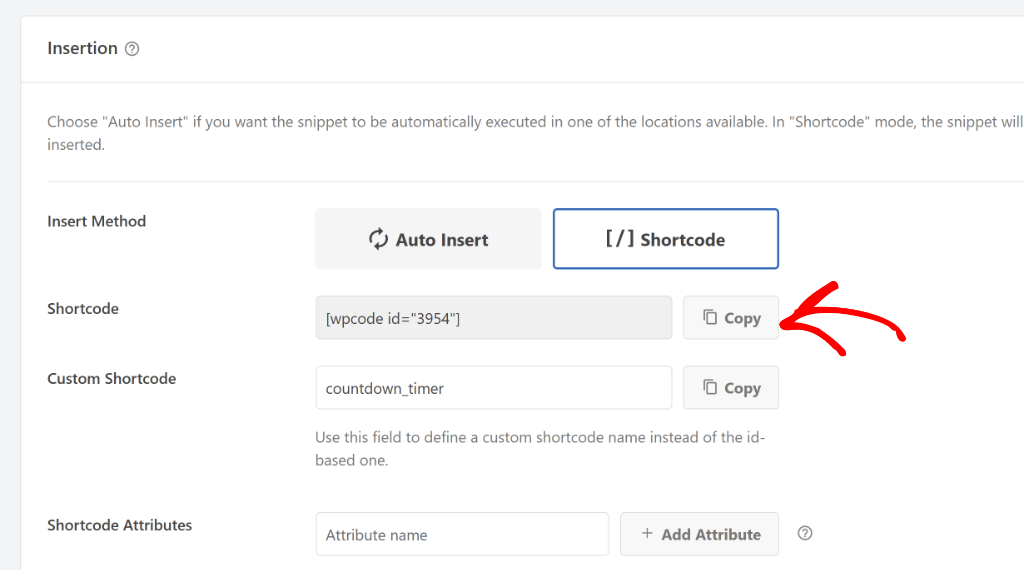
Next, you’ll need to edit or add a new page or post where you would like to display the timer.
Once you’re in the WordPress content editor, go ahead and click the ‘+’ button to add a Shortcode block.
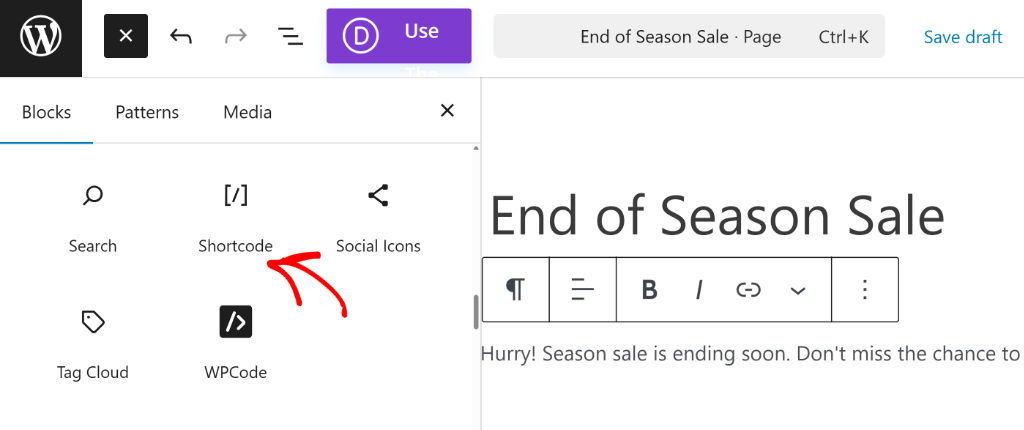
From here, you can enter the shortcode you just copied earlier.
Once you’re done, simply click the Publish or Update button.
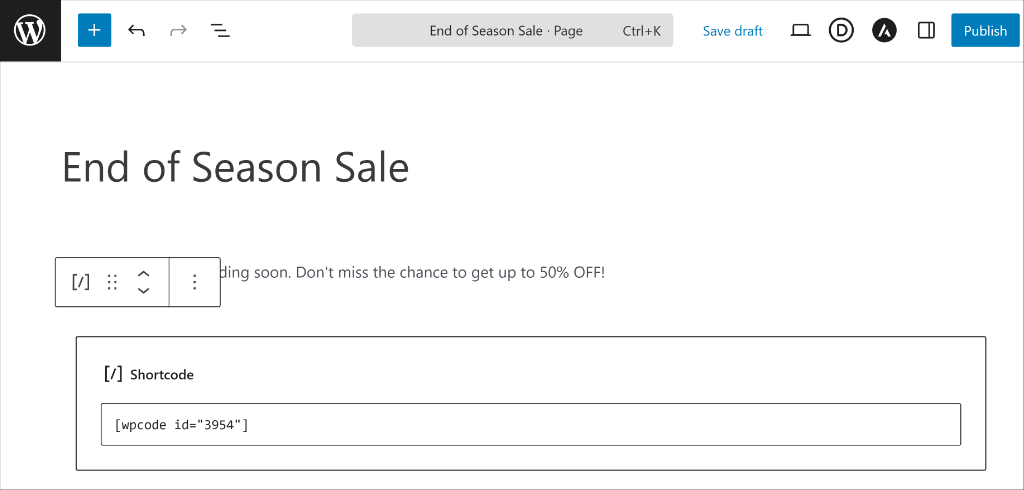
You’ve successfully added a simple countdown timer to your site.
Go ahead and visit your website to see it in action.

Method 2: Add Countdown Timers Using SeedProd
Now, if you want countdown timers to be part of your WordPress theme or a custom landing page, then this method is for you.
With SeedProd, you can create custom WordPress websites and landing page using AI and its drag and drop builder. Using the plugin, you get to create amazing landing pages and add a countdown timer to grab your visitor’s attention.
Do note that you’ll need the SeedProd Pro version for this method since it includes the countdown timer block along with more customization options, email marketing tool integrations, and more.
SeedProd offers lots of pre-built templates to choose from. This helps save time, as you can select a theme and customize it according to your brand.
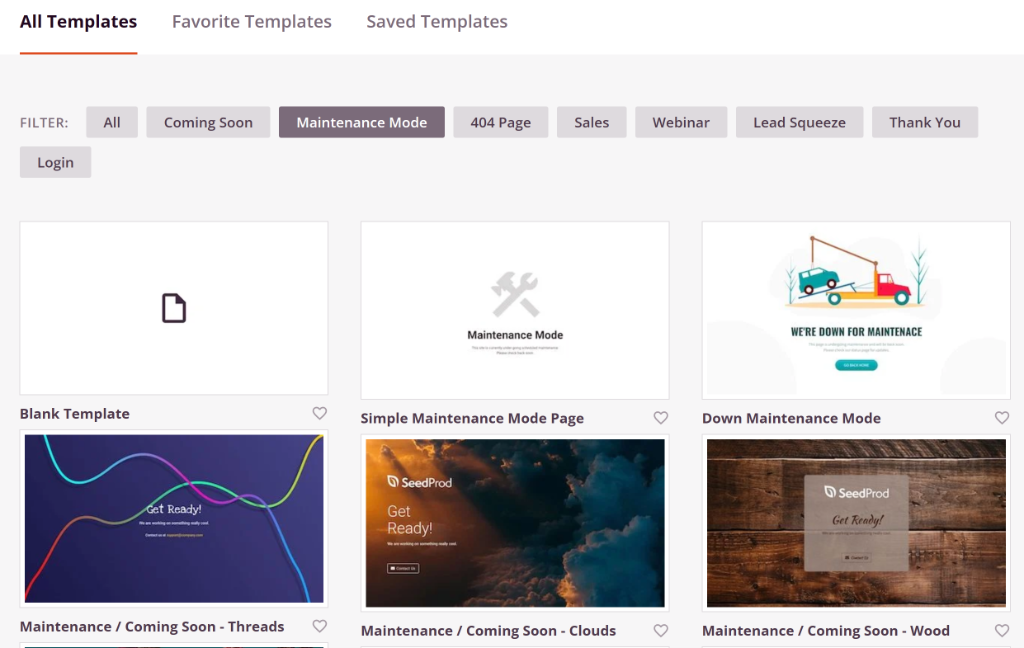
Once you’ve selected a theme, you’ll see the drag & drop page builder.
From here, simply locate the Countdown block from the panel on the left and place it anywhere on the page.
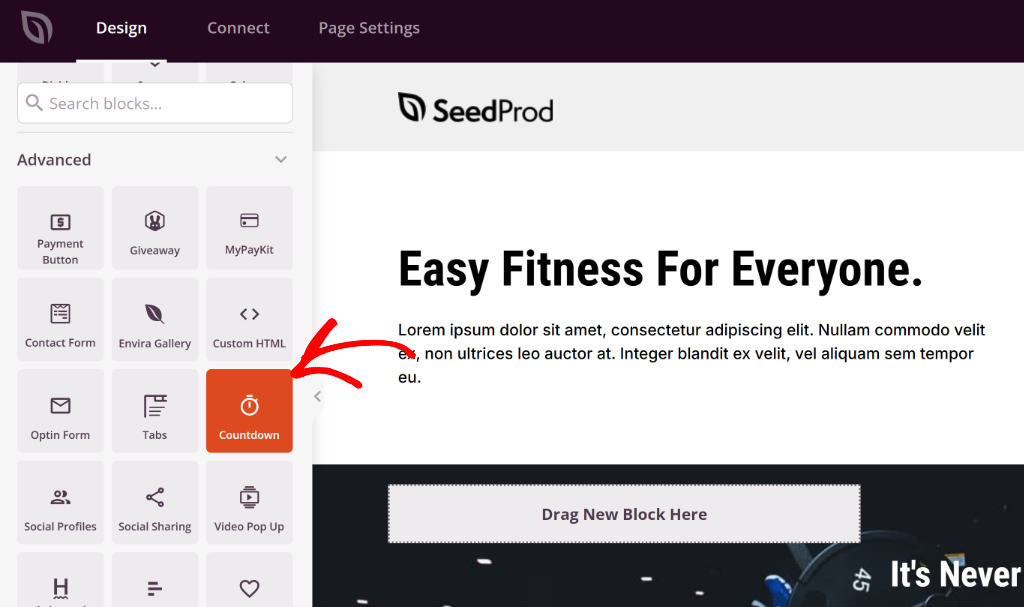
After adding the block, SeedProd gives you more options to customize the countdown timer.
For instance, you can the countdown type, select an end date time, choose a timezone, edit the alignment, change the size, and more.
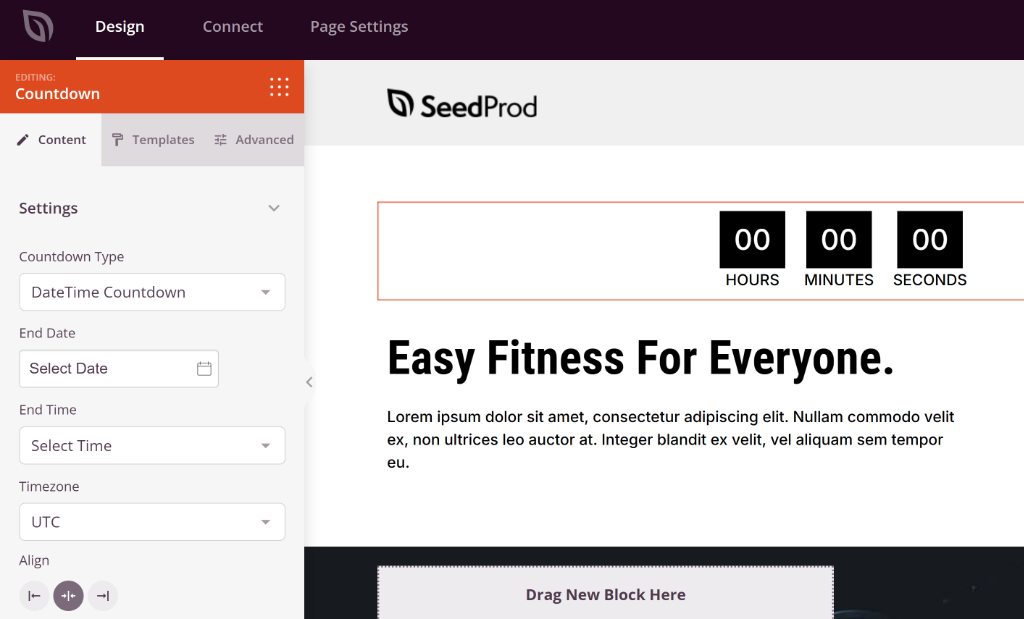
Besides that, you can also select different templates for the countdown block in SeedProd.
Simply switch to the Template tab in the left-panel and pick a template for your countdown timer.
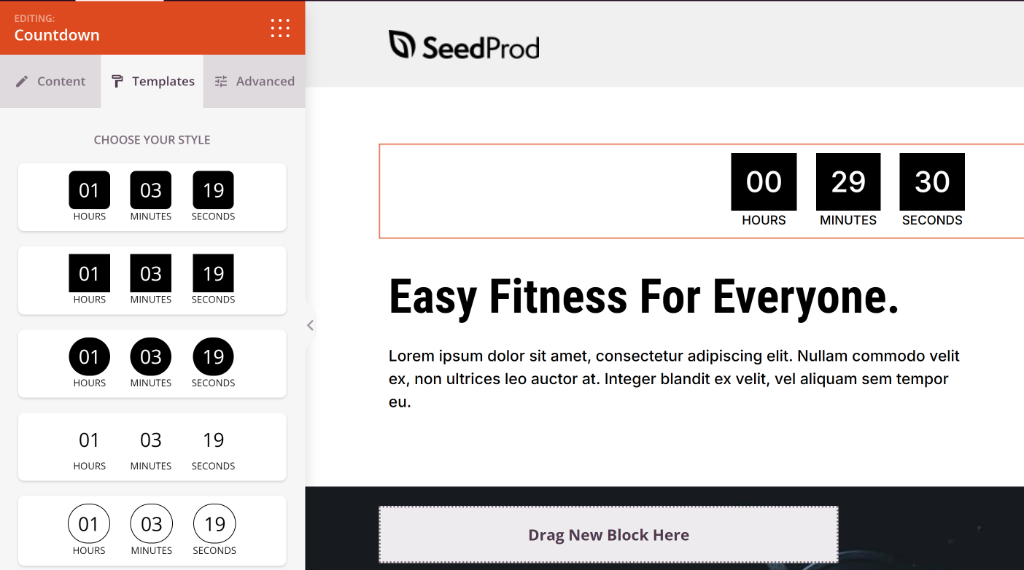
If you want to learn more about using SeedProd and it’s features, then please see this detailed guide on how to create a landing page with WordPress.
Method 3: Add Countdown Timers Using OptinMonster
You can also show countdown timers in popups on your WordPress site using OptinMonster. It is the best WordPress popup plugin and lead generation software on the market.
OptinMonster offers prebuilt templates for different types of campaigns. For example, you can create a popup, floating bar, fullscreen campaigns, inline campaigns, and more. The best part? Some templates come with a countdown timer already added to the popup.
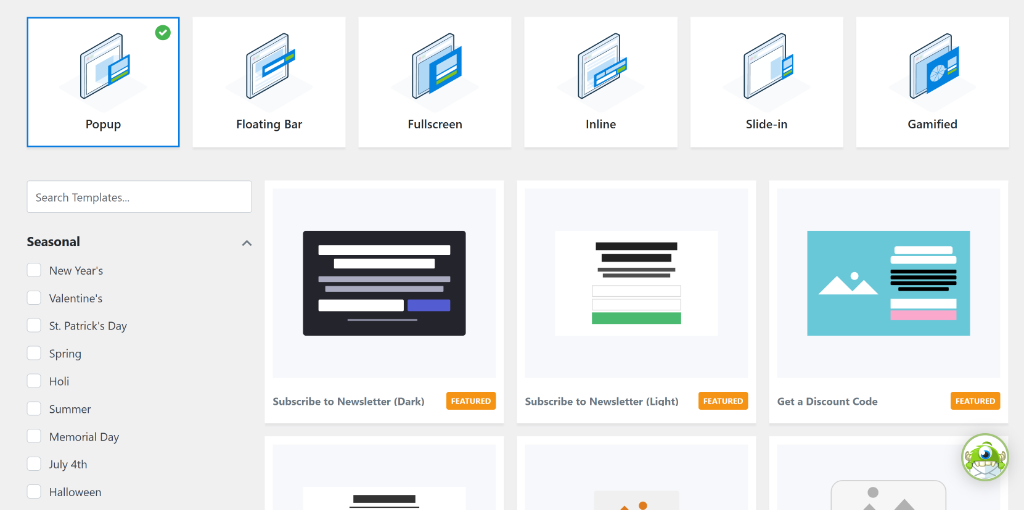
Once you select a campaign type and template, you can edit it according to your requirements.
On the next screen, you’ll see the campaign builder where you can edit the existing text, colors, buttons, and more. From here, simply drag the Countdown block and drop it on to the template.

After adding the Countdown block, you can make further changes to it from the panel on the left.
For instance, there are options to change the countdown type, select an end date and time, choose a timezone, and more.
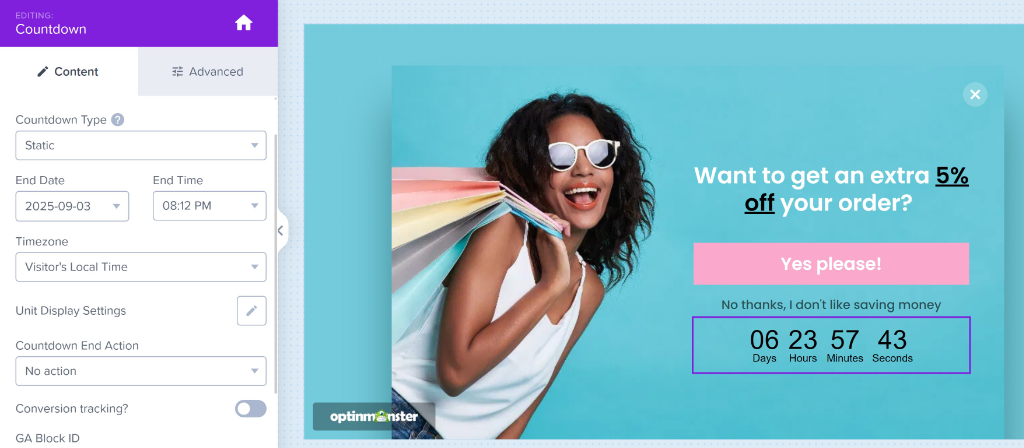
When you’re done editing the popup campaign, you head to the ‘Display Rules’ tab.
Here, OptinMonster lets you set up rules to display the popup to the right people at the right time. By default, it will show the popup on any page when a user spends at least 5 seconds.

However, you can change the rules and display it on a specific page, show it when a visitor tries to leave your site (Exit Intent), target users from a particular location, and more.
You can learn more about using OptinMonster and creating different campaigns by following this guide on how to create a coupon popup in WordPress.
I hope this article helped you learn how to add a countdown timer in WordPress using different ways. You may also want to see our guides on how to enable maintenance mode in WordPress and how to add social share buttons to your WordPress.
If you need help, then feel free to leave a comment below. And don’t forget to follow us on X (formerly known as Twitter) and subscribe to our newsletter for all the latest updates.
